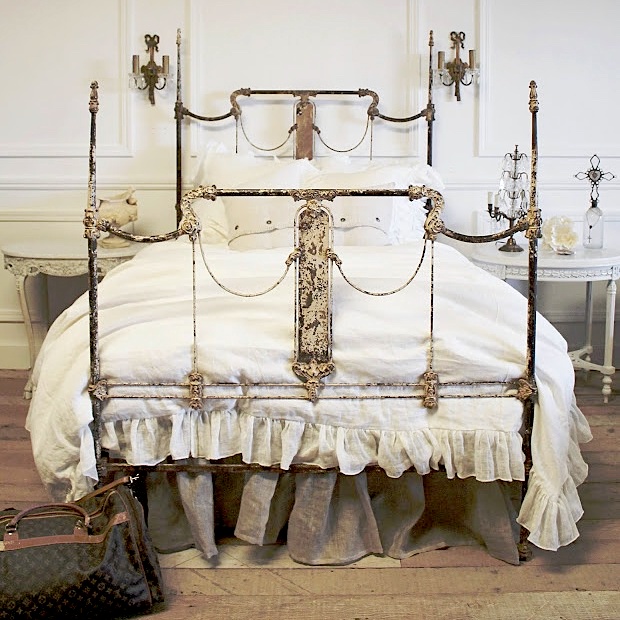Four-poster beds, including antique iron four-poster beds from the Victorian era, can trace their origins back to ancient civilizations, but they became particularly popular in Europe during the medieval period. The concept of a bed frame with four vertical posts, often joined by horizontal rails or a canopy frame, has a long history of development across different cultures.
During the Victorian era, which lasted from the early 19th century to the early 20th century (roughly 1837 to 1901, during Queen Victoria’s reign in the United Kingdom), these beds saw a resurgence in popularity. The Victorian era was characterized by a revival of interest in historical styles and a fascination with ornamentation and intricate design. This period drew inspiration from various historical periods, including the Gothic, Renaissance, and Rococo styles, leading to the creation of elaborate and decorative bed designs.
In England and Europe during the Victorian era, ironwork became increasingly sophisticated and ornate. Iron bed frames, including four-poster styles, were crafted with intricate scrollwork, floral motifs, and other decorative elements. These beds were often highly embellished and featured curvilinear designs, reflecting the prevailing design aesthetics of the time.
While the specific origin of individual antique iron four-poster beds from the Victorian era can vary, many of them were produced by skilled ironworkers and craftsmen in the United Kingdom and Europe. Some notable manufacturers and artisans from this period, such as Archibald Knox and Thomas Elsley, contributed to the popularity of iron beds by creating exquisite designs.
These Victorian-era iron four-poster beds are now considered valuable antiques, appreciated for their historical significance, craftsmanship, and intricate detailing. They continue to be sought after by collectors and individuals interested in period-appropriate interior decor.







